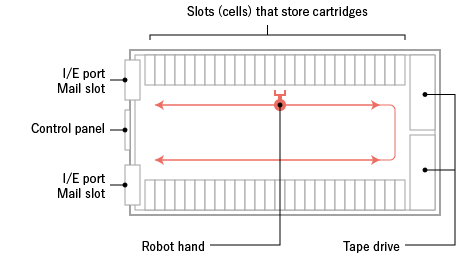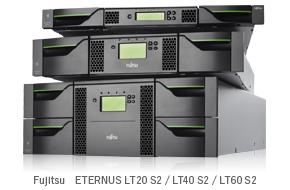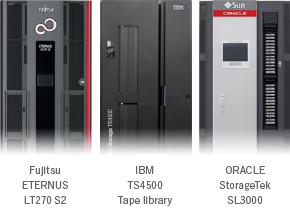This article introduces a tape drive, which is a device that records and retrieves data, and tape automation, which is an external storage containing a lot of tape cartridges, multiple drives and a robotic mechanism that identifies each cartridge and loads it to an appropriate drive.
Tape Drives
A tape drive is a device for recording and retrieving data onto/from tape cartridges. Typical tape drives include those in mid-range LTO tape systems widely used and in enterprise systems having higher performance and reliability (such as the IBM 3592 series and the Oracle T10000 series). Dedicated tape media cartridges are provided for each drive, and their storage capacities vary depending on the generation. To respond to the growing needs for long-term, low-cost secure storage of data, which is increasing explosively, active technical development is in progress for each drive with the aim of increasing the storage capacity and improving the transfer rate.



Tape Automation
The tape automation is equipped with a rack to store drives and cartridges and a robot to automatically load a desired cartridge to the desired drive.
When tape storage appeared for the first time, the tape media needed to be loaded into a drive manually. People had to look for an open reel tape by referring to the volume sequential number indicated on the display and load it into the specified drive.
With time, the format of tape media has evolved from open reels to tape cartridges. This downsizing and concurrently increased storage capacity significantly improved the handling of the tape media, leading to the introduction of an autoloader option, which enabled automatic loading of the cartridges placed in the device in sequence. This autoloader has evolved into a library.


Types of Tape Automation
● Autoloader


● Library



